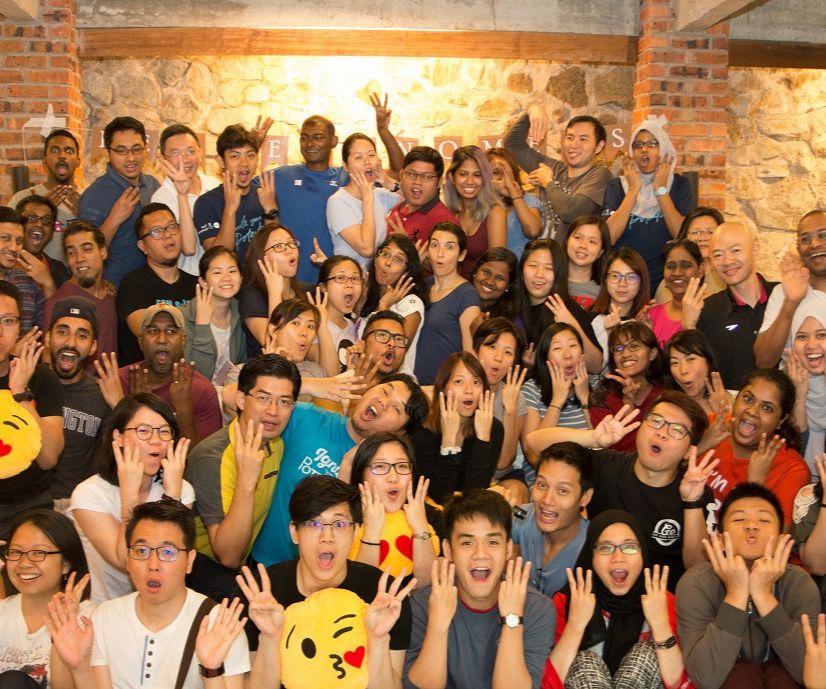5 Ways to Make Onboarding More Collaborative – And Why You Should

The average cost to hire a new employee is USD4,000, according to Glassdoor, and this cost varies based on positions and companies.
With such a significant investment of your company’s time and capital, once you find the right person, you need to ensure that you properly onboard and retain their talent.
According to recent research by Tinypulse, 91 per cent of first-year workers are retained by companies with an efficient onboarding process, and 69 per cent are more likely to stay in a company for three years if there’s a well-structured onboarding programme.
One way to optimise your onboarding is to involve the whole team. Consider how you can make onboarding more collaborative, which will, in turn, engage both the new hire and your current staff.
1. Poll current employees
The best source of onboarding insights is your current team, who has already gone through your process before.
Ask them what worked and what didn’t and then incorporate that into new processes. For example, ask about cultural and organisational aspects that they remember – i.e. not knowing whether to bring lunch the first few days – and include more detailed and helpful information in a fresh welcome pack.
Remember, even small anecdotes can be significant, such as:
- The office dress code
- Where to park on the first day
- Do most employees bring in lunch or go out?
- Who do you ask to order new office supplies?
This type of polling can be informal, with 1-on-1 conversations about what they liked and didn’t like, or you can create a survey with specific questions.
2. Develop a mentorship programme
While it’s helpful for a human resource (HR) rep or manager to train a new hire on technical details, like work devices and paperwork, a peer-level mentor will offer a sense of relatability to the onboarding process while being there for all the little questions that come in the first few weeks at a new job.
Codementor uses their junior developers for mentoring, ensuring that new hires are being mentored by someone who recently went through onboarding themselves, but still has experience with the company. They explain that there’s an additional benefit for the mentors too:
“Having a junior developer take on the responsibility is a great way for them to put their knowledge to practice, give them leadership opportunities, and quietly check that they are up to snuff.”
Not to mention, your team new member will likely connect better with someone who has recently been in their shoes. They may also feel more comfortable approaching their peers with questions and issues, rather than a busy manager.
Read: The Crucial Steps to Ensure the People You Hire Can Deliver
3. Integrate technology
Use technology to your advantage during the onboarding process, suggests Elena Carstoiu, chief operations officer (COO) of Hubgets. She explains: “More and more companies rely on instant team collaboration technology to reduce the induction period and speed up integration for newcomers. Personally, I think that the transfer of company knowledge is the biggest gain in building a collaborative work environment with the help of technology.”
Like mentoring, using technology such as group chat platforms and shared file storage, such as Google Drive or Box, allows employees to dive right in. With access to documents and co-workers, they can be more effective and onboard with greater efficiency.
Carstoiu continues, “New employees get to learn the ropes of their new job faster than ever because the technology provides them with instant access to work information while helping them bond with the team. For companies, this means a minimised induction effort and a faster, cost-effective onboarding process.”
You likely already use many of the tools that would make this experience more efficient, so the task now is to introduce them into the onboarding process.
4. Build a culture of community

Look outside your new hire’s team when it comes to onboarding and involve staff from different departments. This helps the new employee understand the various communication channels and how departments work cross-functionally.
Learning about different roles will also clarify where and how the new hire fits into the organisation, as a whole, all of which helps new hires feel more like part of the team, suggests Ron Carucci, founder of Navalent and author of Rising to Power.
He explains to Harvard Business Review: “Building relationships during their first year can help new hires feel less isolated and more confident.” To make this happen, Carucci suggests:
“New hires, in partnership with their manager, should identify 7-10 people – superiors, peers, direct reports, and internal and external customers – whose success they will contribute to, or who will contribute to their success.”
This process will help you foster a culture of community within your company while setting your employee up for success.
Read: Gen Y’s Thoughts on How HR Can Do Better
5. Track success and solicit feedback (from everyone)
A recent survey by SilkRoad revealed that only 45 per cent of companies evaluate their onboarding programme. This means more than half of companies are missing out on a valuable opportunity to reflect and improve upon their process.
Once an employee is fully onboarded, you should ask for their feedback and the feedback from anyone who was involved, including co-workers and managers.
According to that same survey, 53 per cent of C-suite executives are only occasionally or minimally involved in the onboarding process, so be sure to include them in this feedback process.
Don’t forget to track and analyse the success of employees based on their onboarding programmes, allowing you to adjust and implement in the future. This helps you optimise onboarding while showing your staff that you value and appreciate their opinions.
Find your collaborative onboarding process
A team-based onboarding programme creates a faster, more streamlined experience for the entire company and has a variety of benefits.
The new hire gets up to speed faster and has someone to connect with during the first few weeks, allowing them to understand their place within the company and the dynamics of the culture.
Current staff members are also given a voice in guiding new talent and see that their opinions matter. Collaboration like this engages the entire team, while building an onboarding programme that helps you retain talent for years to come.
Functional
Tags: HR





